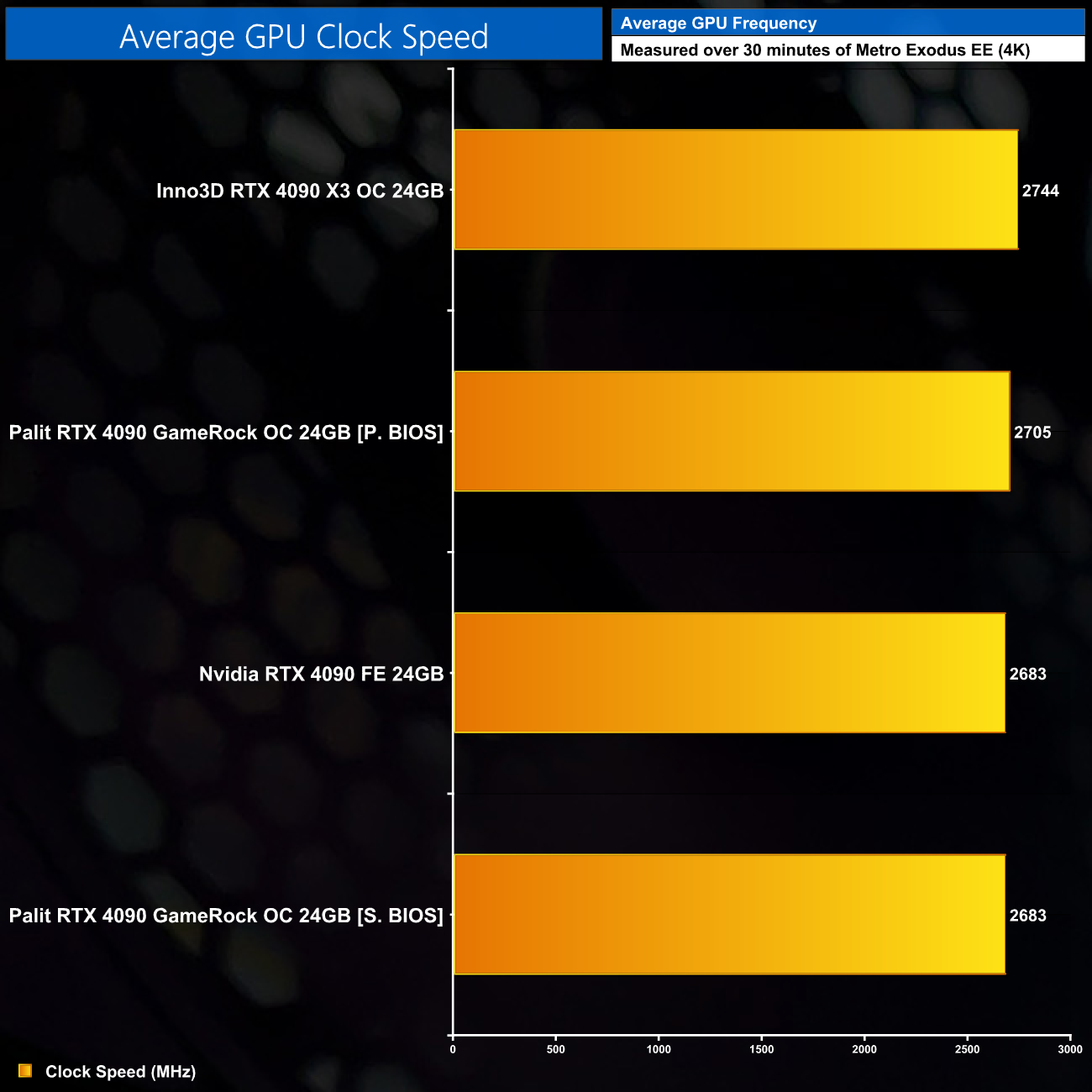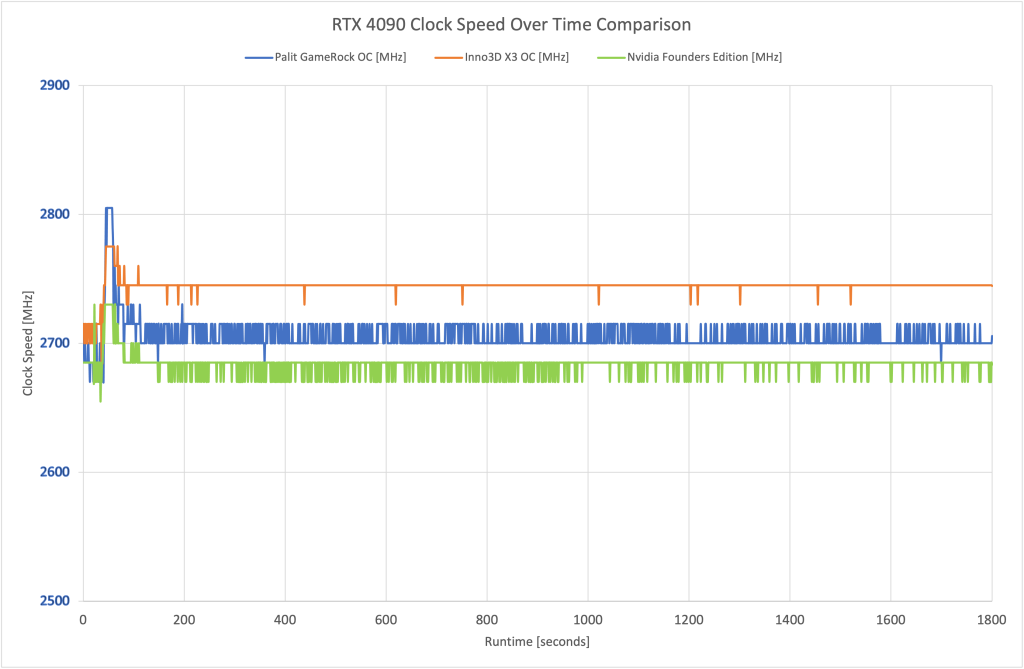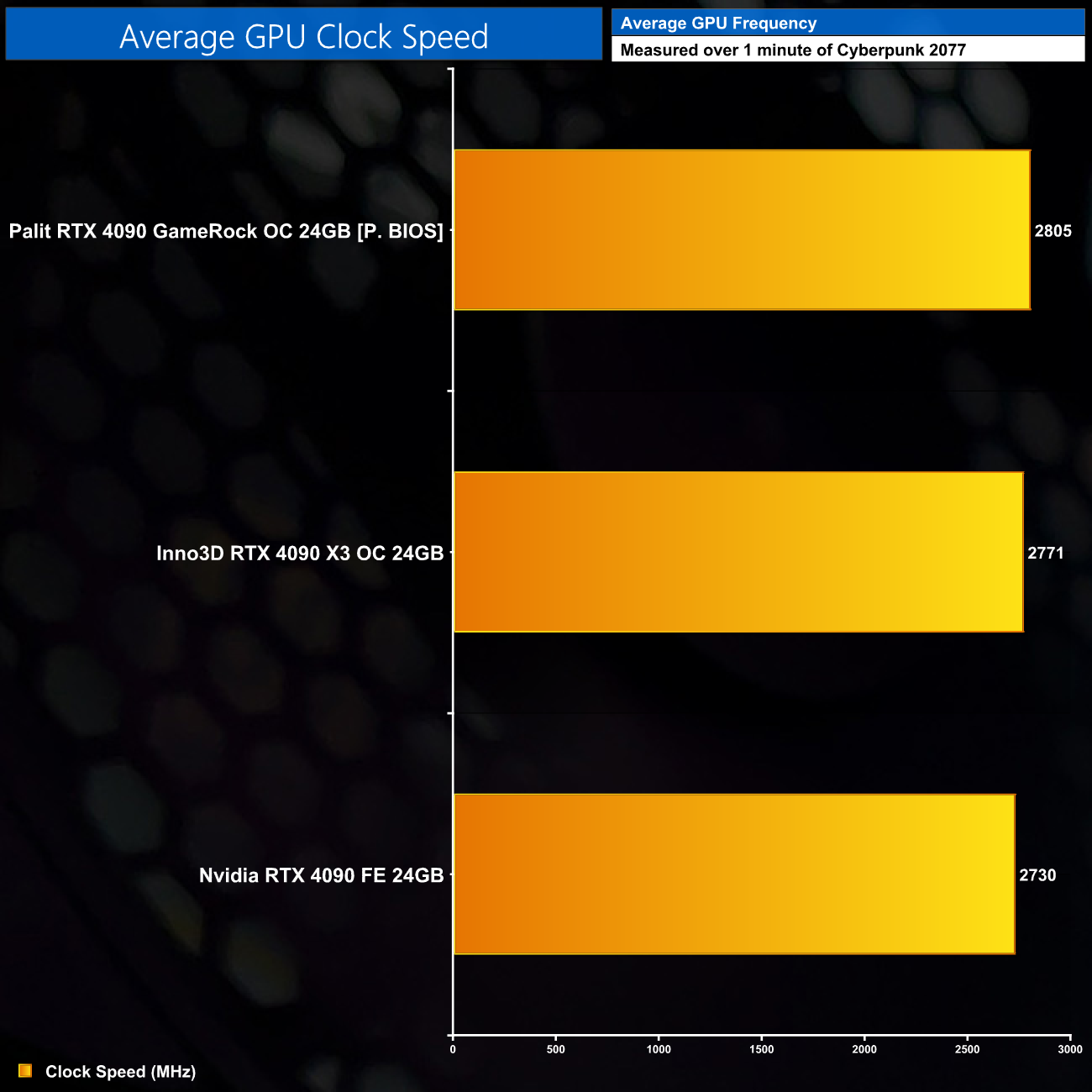Here we present the average clock speed for each graphics card while running Metro Exodus Enhanced Edition for 30 minutes. We use GPU-Z to record the GPU core frequency during gameplay. We calculate the average core frequency during the 30-minute run to present here.
As for clock speed behaviour, here I noticed a bit of an oddity. The GameRock OC has the highest-rated boost clock of any RTX 4090 I’ve tested so far, but for some reason, it wouldn't boost as high as the Inno3D X3 OC in Metro Exodus Enhanced Edition, which is what I use to run my 30-minute stress tests and log the average frequency from that data. More accurately, the GameRock couldn't sustain as high a clock speed as the X3 OC, as it did initially boost to just over 2800MHz, before settling down around 2700-2715MHz.
This is a definite oddity, as the GameRock OC does actually produce higher frame rates than the Inno3D in every game we tested, apart from Metro Exodus Enhanced Edition, so I think it’s just a case of the card's frequency varying depending on the specific workload, as Metro Exodus Enhanced Edition is very RT heavy. In Cyberpunk 2077, with no RT, we actually saw the GameRock averaging a higher clock speed (as shown above). It’s not a big deal either way as overall performance is incredibly similar in our game benchmarks, but it's an interesting behaviour nonetheless.
Be sure to check out our sponsors store EKWB here
 KitGuru KitGuru.net – Tech News | Hardware News | Hardware Reviews | IOS | Mobile | Gaming | Graphics Cards
KitGuru KitGuru.net – Tech News | Hardware News | Hardware Reviews | IOS | Mobile | Gaming | Graphics Cards





